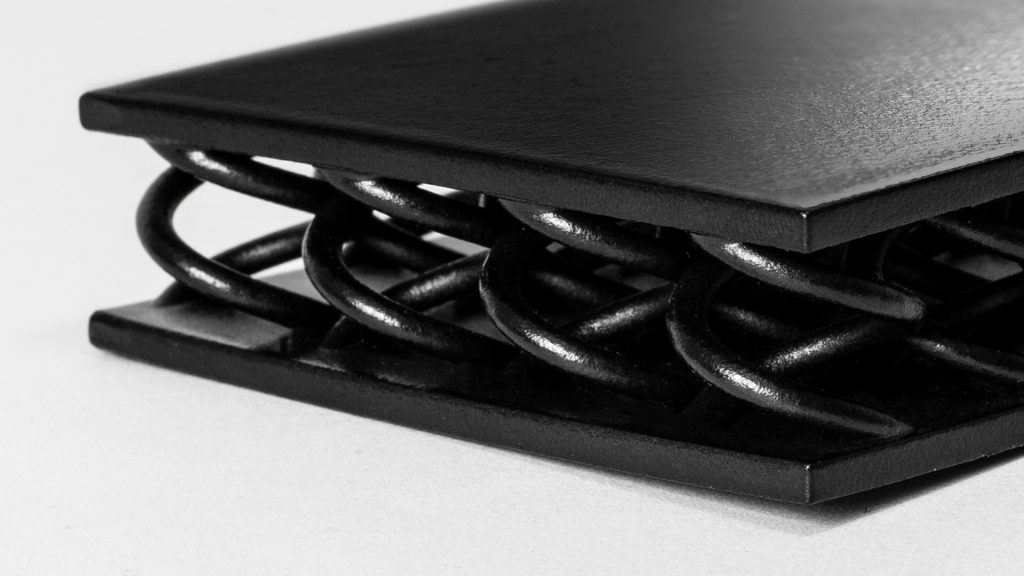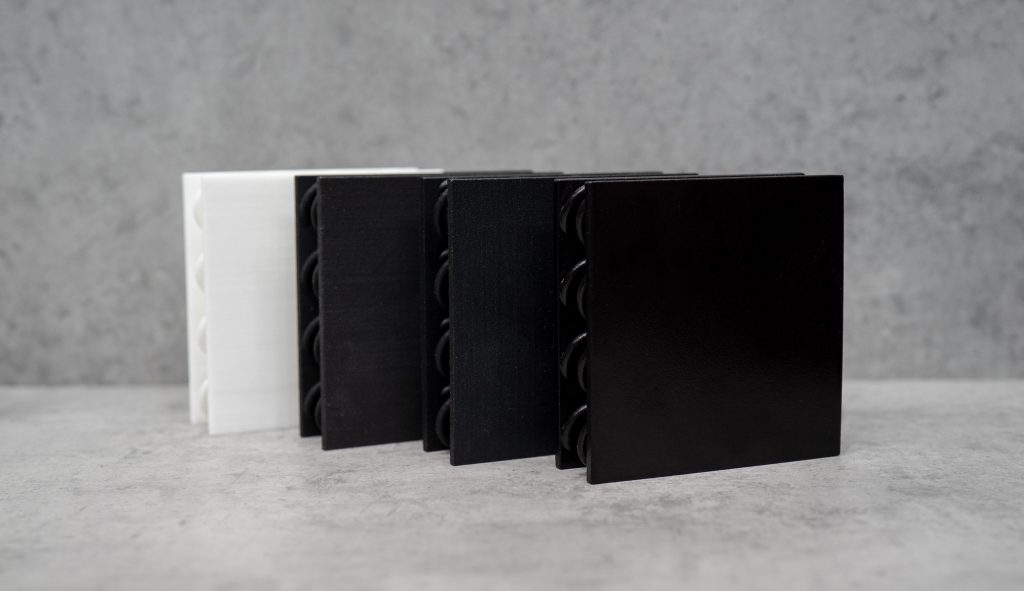Recently, German post-production solutions provider DyeMansion launched its VaporFuse Surfacing (VFS) technology for 3D printed parts.
Suitable for finishing the end products of both laser sintering (LS) and HP Multi Jet Fusion (MJF) processes, VPS technology is a step forward for 3D prints that rival the quality of injection molded parts.

PolyShot vs. VaporFuse
With the addition of VPS, DyeMansion now offers two surface finishes to its customers.
PolyShot Surfacing (PSS) is a mechanical finishing process that gives parts a matte surface, and enables the addition of vibrant colors, now covering the entire RAL spectrum.
With VPS, however, DyeMansion introduces a glossy finish to 3D prints – a feature typically uncharacteristic of objects made using LS and MJF due to their powdered feedstocks.

Achieving a smooth surface finish
As the name suggests, DyeMansion’s VPS technology uses an industry-safe solvent to treat the surface of 3D printed parts. This solvent dissolves particles on the surface of 3D printed parts. As Dr. Alena Folger, R&D Chemist at DyeMansion, explains, this gives “the polymer chains have a sufficiently high mobility and rearrange at the surface.”
In this process, surface area and energy is reduced, simultaneously smoothing out these particles. The end result, adds Dr. Folger, is “3D printed parts with a closed, smooth surface.” These parts have a high scratch resistance, and are completely water repellent, features particularly desired in the medical sector, and consumer areas like fashion and sports equipment.

The future of 3D printing: end-use applications
Integrated within DyeMansion’s Print-to-Product workflow, VPS is compatible with a wide range of materials, from tough PA12 (as with PSS) to TPU and other soft materials.
In closing Felix Ewald, CEO and co-founder of DyeMansion, comments, We at Dyemansion believe that the future of additive manufacturing […] is more about the appropriate finish for final end-use parts and applications.”
In addition to EOS and HP, the company works with 3D Systems, Prodways, Farsoon and voxeljet High Speed Sintering (HSS) technology.
Ewald adds, “The cooperation with printer manufacturers shows that DyeMansion is becoming more and more a platform for exactly those applications,”
“[…] we work constantly on expanding our portfolio with new systems and technologies.”
DyeMansion is currently for more beta customers to put VPS to the test and can be contacted here.
Stay up to speed with all of the latest additive manufacturing news, subscribe to our free newsletter, follow us on Twitter and like us on Facebook. Join 3D Printing Jobs now to search for the next step in your career.
Featured image shows close-up of a part finished with VaporFuse Surfacing technology. Photo via DyeMansion



